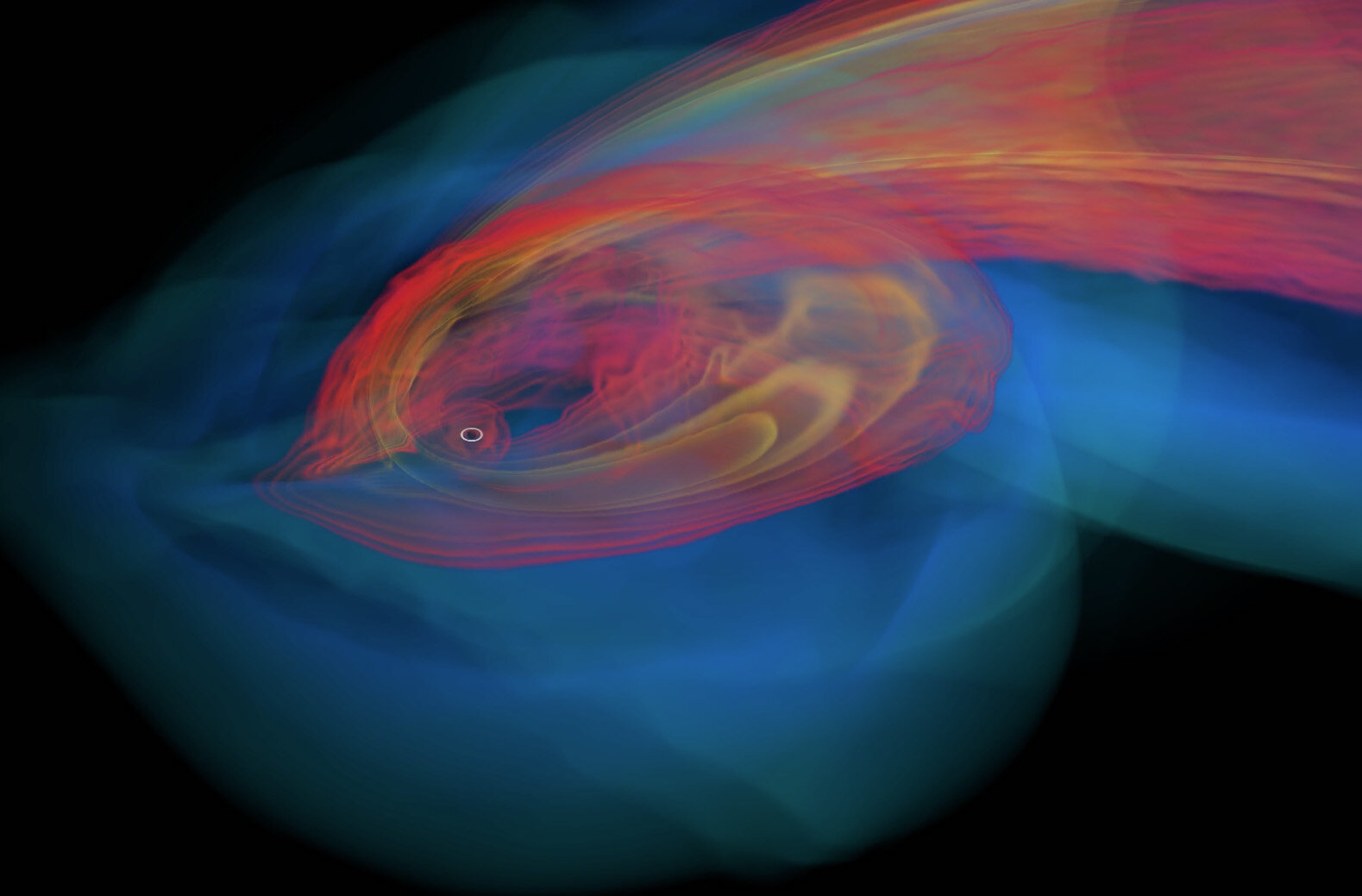
New Observations Of Black Hole Devouring A Star – ‘First Solid Confirmation’
When a stars passes near a black hole, the tidal forces separate it, creating shiny flare of radiation as the material from the star falls into the black hole. Astronomers are studying the light of these Tidal Disruption Events (TDEs) to trace the feeding behavior of the supermassive black holes sitting in the centers of galaxies.
New observations of TDEs, led by astronomers from UC Santa Cruz, now provide a clear evidence that debris from the star forms a rotating disk, called an accretion disk, around a black hole. Theorists are debating whether an ejection disk can be efficiently formed during tidal events. New findings, accepted for publication in the Astrophysical Journal and available online, should offer help with addressing of this issue, said first author Tiara Hung. postdoctoral researcher at UC Santa Cruz.
Co-authors Enrico Ramirez-Ruiz, a professor of astronomy and astrophysics at UCSC, and Jane Dai of the University of Hong Kong have developed a theoretical model (published in 2018) that can explain why X-rays are not usually observed in TDEs, despite the formation of an accretion disk. Recent observations give strong support to this model.
Furthermore, Dr Ramirez-Ruiz said: “This is the first solid confirmation that accretion disks form in these events, even when we don’t see x-rays. The region close to the black hole is obscured by an optically thick wind, so we don’t see the x-ray emissions, but we do see optical light from an extended elliptical disk.”
Professor Foley: My jaw dropped
Evidence for the accredtion disc comes from spectroscopic observations. Co-author Ryan Foley, an assistant professor of astronomy and astrophysics at UCSC, and his team began monitoring TDE, after it was first discovered in November 2018, by the All Sky Automated Survey for SuperNovae. He observed an unusual spectrum while observing the TDE with the 3-meter Shane telescope on the night of January 1, 2019, at the UC’s Lick Observatory.
Ryan Foley said: “My jaw dropped, and I immediately knew this was going to be interesting. What stood out was the hydrogen line—the emission from hydrogen gas—which had a double-peaked profile that was unlike any other TDE we’d seen.” He explained that the double peak in the spectrum results from the Doppler effect, which shifts the frequency of light emitted by a moving object. In an accretion disk spiraling around a black hole and viewed at an angle, some of the material will be moving toward the observer, so the light it emits will be shifted to a higher frequency, and some of the material will be moving away from the observer, its light shifted to a lower frequency.
Professor Foley further explained: “It’s the same effect that causes the sound of a car on a race track to shift from a high pitch as the car comes toward you to a lower pitch when it passes and starts moving away from you.
The team continued to gather data over the following months, observing the TDE with several telescopes as it evolved over time. The findings suggest that disk formation can be a common thing among optically detected TDEs, despite the rarity of double-peaked emission.
In addition to Hung, Foley, Ramirez-Ruiz, and other members of the UCSC team, the coauthors of the paper also include scientists at the Niels Bohr Institute in Copenhagen (where Ramirez-Ruiz holds a Niels Bohr Professorship); University of Melbourne, Australia; University of Hong Kong, Carnegie Institution for Science; and Space Telescope Science Institute.


